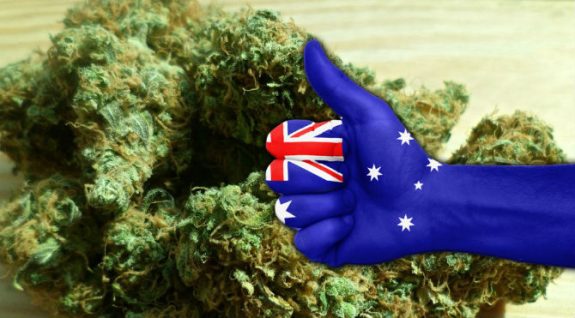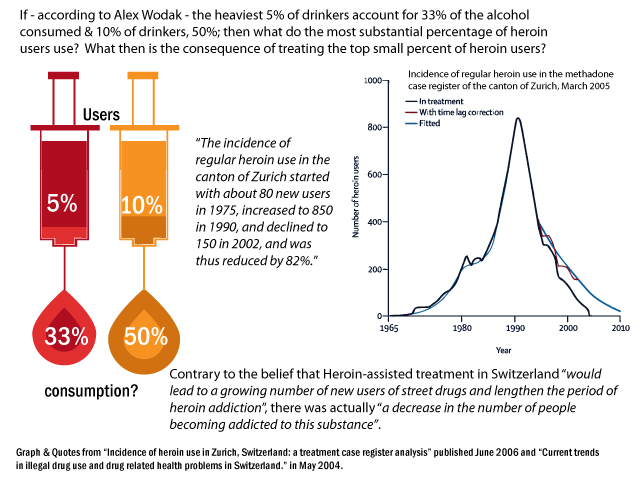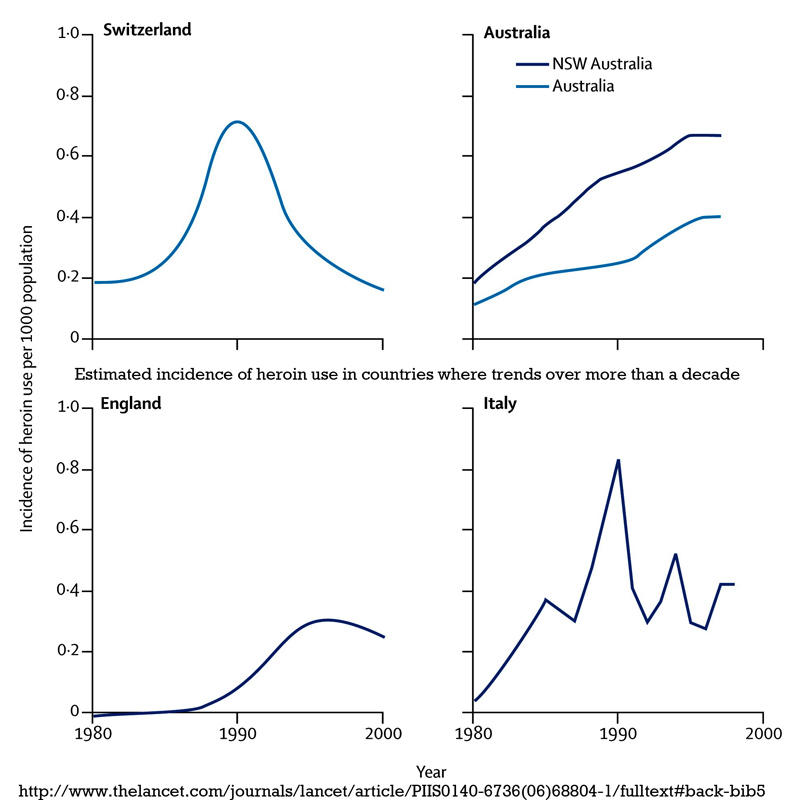Drug Law Reform

By John Haly
The War on Drugs, like the ones on terror, waste, poverty, and crime, are metaphors for institutional failures to address fundamental problems in our society. Aside from the fact that it is never clear when any of these “wars” will be over, it is also the rhetoric of a political failure to address social reform.
To date, the West’s pursuit of these wars has piled misery on misery (as wars are prone to do). Such wars ostracise the victims, casualties and collaborators in conceptual battles that have no actual target but certainly cause collateral damage.
The “War on Drugs” neither defines the problem nor allocates appropriate consequences for drug use. Moreover, this language does not improve the plight of those suffering. There is although, a long historical process which led to the development of the three international drug treaties and the international drug control systems for the more academically inclined. But for now, let’s simplify.
What is a drug but an ingestible substance designed to have a physiological effect? From that perspective, the orange juice I had for breakfast, morning tea and lunch fulfils that description, as does the small white pill I then popped to alleviate the acidic reaction in my stomach, that repeated orange juice consumption had created. Depending on what that pill was, government legislation may deem it acceptable or not.
The “War on Drugs” is usually framed to attack those substances any given society, country or State consider either “illegal” or harmful. The media often frames drug addiction in terms of the (over) consumption, possession or distribution of goods that legislators have deemed to be “illegal”. However, that classification can, of itself, be arbitrary. For example, none of this captures the harm done by legal drugs, such as the prescribed opioid epidemic currently killing thousands of Americans (and making its way into Australia), or similarly, the ravages of alcohol and nicotine. Indeed, one of the key imperatives and justifications behind the push for law reform on drugs is that the classification of a “harmful drug” may not necessarily be based on any adverse physiological or psychological effect. Cannabis is a case in point.
Cannabis in 19th and early 20th centuries was widely used in the USA and even for a while carried by pharmacies as a drug to treat migraines, rheumatism, and insomnia. Hemp was used as a superior textile used for ship sails and caulking. Just as Hemp grew to become a possible threat to US textile industries, Cannabis faced a challenge when in 1925 in Geneva a meeting of the League of Nations banned globally three plant-based drugs – opium, coca and cannabis. America although did not follow suit till the 1930s when it became the patsy drug that the Department of Prohibition took on as a replacement cause for alcohol prohibition. The ending of alcohol prohibition left Harry Anslinger (the G-man in charge) with a government department twiddling its thumbs and needing a drug to prohibit.
Racism and fear were used to outlaw Cannabis despite medical advice that it was not dangerous. An “alternative fact” campaign was waged demonising the drug and the Mexican sources for it until legislation banning it emerged. America then pressured trading partners to follow suit. You can read the real story behind its illegitimate banning in the links provided, but for now, let’s focus on drug law reform and how far behind, Australia sits, in its efforts.
Staying with cannabis, as a medically demonstratable drug to treat disease, we have moved way beyond migraines, rheumatism, and insomnia. Strains of marijuana have been used to treat Arthritis, Asthma, Bipolar Disorder, Attention Deficit Disorder (ADD), Cancer, Crohn’s Symptoms, Dyspepsia Symptoms, …. and a long alphabetical list of conditions listed on the Medical Marijuana site. There is although, an enduring medical debate as to whether it does effectively treats these conditions or not. The reluctance of the Therapeutic Goods Administration (TGA), AMA and college of Physicians to approve medical marijuana is not based on the medical opinions expressed for treatment remedies in places like Canada. Canada provides access to medical cannabis to nearly 130,000 people, while the TGA in Australia has acknowledged only 140 people here.
Like our medical authorities, there was a time when Canadian Doctors expressed their reluctance, as they did in a report in 2014. Three years later, the surge in demand for it as a medication, has seen doctors evidently more comfortable with its efficient use.
However, despite Australia being a nation of immigrants, we have an inherent distrust of learning from anyone else’s success with new or progressive technologies, whether the subject is medical marijuana, renewable energy, transport, immigration, education and the cost of education. We are just inherently stubborn, like a rebellious teenager, unwilling to learn from older advisors/countries.
Other examples of our recalcitrance in Drug Law reform, is Heroin-assisted treatment. As of last August 2017, it will be 20 years since John Howard prevented the proposed scientific trial evaluating the effectiveness of prescription heroin, killing off six years of scientific research.
In the meantime, countries such as United Kingdom, Switzerland, the Netherlands, Germany, Canada, Belgium, and Spain have all demonstrated success with the impressive results of their heroin-assisted treatment programmes. Denmark has also agreed to a similar plan although in its case started the programme without running a trial. Why still be running trials when you can review the results from everyone else?
Staff assessment of patients determines not only that their patients have a medical dependency on the drugs but also that other approaches to wean them off this dependency have been unsuccessful. As such, it is not a first-line treatment, but more often a facility of last resort, and apparently a highly successful one.
Indeed, it is now not only made clear that heroin-assisted treatment has been successful regarding mental health, physical health, social functioning and adaptability, but also that it has had economic benefits. HAT is cost-effective because the benefits of the treatment exceed the costs. For example, the cost-effectiveness of the trials has been demonstrated in a substantial reduction in drug-related crime, and this is despite such programs treating barely 5% of the heroin using population.

Fig 1: Incidence of heroin use in Zurich following Heroin-assisted treatment
Dr Alex Wodak, the Emeritus Consultant for Alcohol and Drug Service at St Vincent’s Hospital, draws parallels with the treatment of alcoholism:
“The small minority with the (most) prodigious appetite for heroin accounts for a disproportionate share of the harm”, he said.
“But we know the alcohol market best:
- The heaviest 5% of drinkers account for 33% of the alcohol consumed
- The heaviest 10% of drinkers account for 50% of the alcohol consumed
- The heaviest 20% of drinkers account for 70% of the alcohol consumed
The heroin market is probably just as unequally dispersed, but we don’t have figures because the market is illegal.
So Heroin Prescription Treatment is about getting that 5% using – some maybe using $1000/day? – into treatment – to stop them recruiting more novice users.”
Removing these addicts from the drug scene, for which other treatment programs have had limited success, has had a big impact on the heroin market in the countries where such programs have been implemented. Evidence arising from these test programs has shown a disproportionate reduction in drug-related crimes and recruitment of new addicts. Switzerland, in particular, has been an example of this disproportionate change.

Fig 2: Estimated incidence of heroin use in countries where trends over more than a decade have been published
In a 12-year period of the trial in Switzerland, not only were there marked decreases in the estimated initial uptake of the drug in Zurich from 850 people in 1990 to just 150 in 2002, but there was also a reduction in quantities of drugs seized in Zurich. Australia is still only just discussing this as a possibility, according to Dr Alex Wodak when outlining the most recent advocacy efforts in Canberra for this program in August. It’s not even on the agenda in Australia now.
This isn’t the only area of Drug Law reform we are behind on, as evidenced by our responses to Medically Supervised Injecting Centres. In early September the upper house Parliamentary Legislative Council reported on a review for a medically supervised injecting centre in Melbourne. The Victorian Government was then required to respond within 3 months, bringing it to December before we can expect to see any movement.
Unfortunately, the current Victorian Premier is on record as being opposed to a MSIC, including making an election promise not to commit to it in his first term. Given that both the government and opposition have committed to positions competing on a commitment to toughness on drugs, it is expected there will be parliamentary opposition to this centre no matter who is in government. This is despite the fact that members of the local Richmond community and the media have come out in favour of such a facility. The residential group, the Victoria Street residents for an injecting room, has been particularly vocal in support in media interviews with Australian radio presenter, Jon Faine and Loretta Gabriel.
So the local community sees sense in it, and Europe is replete with success stories arising from their trials. Nevertheless, Australia continues to play the cynical, probing but not willing to commit “teenager”. One who suspects their older cousins in Canada and Europe might have a better insight into how this all works but damned if we are going to take the plunge.
When will Australia grow up? When will we cast aside our irrational fears of what might happen, given that there is no evidence to justify our anxiety (in fact, the complete opposite)? Australia’s change resistance is making us the laughing stock of nations. Everyone else is for Drug Law Reform, or Marriage Equality, or Climate Change mitigation, or progressive transport infrastructure, but not us. We still think medical cannabis will warp our minds. We still think marriage equality will lead to all sorts of perversions that no other nation on earth has encountered after committing to it. We still elect climate sceptics to parliament, despite having experienced a continuous chain of consecutive hottest years on record. We still spend millions on roads when public transport solutions have proved invaluable to far larger cities than we even possess.
So while this article is predominately about Drug Law Reform, our resistance is a cultural and political ideology, built behind a wall of entrenched fear and loathing of change and progression. Just because we are a young nation, isolated by vast oceans, settled by invasion, and used as a dumping ground for the unwanted of older cultures, we should not be afraid of emerging from our shells and taking on the lessons learnt by older, wiser heads. Youth is supposed to be characterised by risk-taking and adventure, being prepared to explore where older more cautious heads dare not tread. Instead, in areas like Drug Law Reform, amongst many other examples, we belie this potential, being afraid of our shadows, particularly when the shadows are cast from afar.
We need to be decriminalising Marijuana, making use of medical cannabis to improve health outcomes. We should be setting up Medically Supervised Injecting Centres to cut back the harm bad drugs do to our community. Also, we should be treating the severely addicted through programs like Heroin Assisted Treatment. The “War on Drugs” has had a huge cost to our community and the collateral damage has been far greater than it ever needed to be. The war needs to end. Peace needs to reign. Drug use should be treated as a medical and social problem, not a crime. We have tried the war tactics. They haven’t worked. As they say in the surgical parlance, “the procedure was successful, but the patient died”. Time to try something else.
This article was originally published on Australia Awaken.
Like what we do at The AIMN?
You’ll like it even more knowing that your donation will help us to keep up the good fight.
Chuck in a few bucks and see just how far it goes!
Your contribution to help with the running costs of this site will be gratefully accepted.
You can donate through PayPal or credit card via the button below, or donate via bank transfer: BSB: 062500; A/c no: 10495969










4 comments
Login here Register here-
Phil -
Aortic -
Andreas Bimba -
Harquebus
Return to home pageEminently logical arguments – and that is why Australians in the collective won’t be interested. Yes, we certainly are a rather juvenile culture that fears change – that fear being an inherent and defining characteristic of conservatism. Its also a form of madness because nothing stays the same, well, other than the irrational fears of conservatives.
Great stuff John. H L Mencken ” It is the aim of all practical politics to keep the populace alarmed thence clamorous to be led to safety.” Warren Terrah Warren Drugs all meaningless wastes of resources costing millions and achieving nothing. Keeps your average punter convinced that their elected representatives are protecting their well being, whilst their eyes are constantly lowered on their current position and the all pervasive need to hang on to power. As Churchill said, ” your opposition is in front of you, but your real enemies are behind you.”
So the new modus operandi is we as citizens, research issues in our spare time, read on line articles like this, maybe read a book or two, then we try to influence policy change by banding together, becoming activists, attend talks and rallies, try to persuade others, maybe join a political party and build a movement until it becomes sufficiently large that some political representative decides there’s some votes in this and might actually do something?
No. I suggest that we all offer zero support to any party that routinely ignores or acts counter to the best interests of citizens or the nation as a whole. This includes the Liberal Party, the National Party and the Labor Party. DON’T VOTE FOR THEM, DON’T COMMUNICATE WITH THEM until they reform. Take time to think a bit more deeply and only ever vote for parties or independents that have INTEGRITY. Remember that word INTEGRITY.
Or be like the Austrians and vote for a superficial piece of fluff that has charisma and a nice smile while he and his backers plunder your future.
Nope, us Aussies will choose the latter option because that’s the consensus opinion of the commercial and government owned mass media.
Sometimes one has to get the gun out and shoot the rats under the house rather than hoping they will stop gnawing the cables, pipes or other important stuff.
It is prohibition that supports black markets. The drug dealers are the last to want decriminalization. It would destroy their business model.
“Its fast-growing stalk yields one of the strongest and most useful fibers known, used in superior paper, canvas, ropes, insulation, cardboard, clothing, shoes and plastic — plastic that is, by the way, biodegradable. This one plant can provide many of the products an industrial society needs, sustainably, while drastically reducing pollution, energy consumption, deforestation, fossil fuel use and providing income for millions of farmers”
“Both hemp and marijuana are cannabis plants. Hemp is cannabis sativa and marijuana is cannabis indica. So when regulators wanted to prevent people from getting high on cannabis indica, they criminalized cannabis, which included cannabis sativa, which made it illegal to use one of the most useful and sustainable crops the world has ever known.”
“Marijuana is safe, we know it’s safe, but it’s our cash cow and we will never, ever, give it up.”
http://theantimedia.org/ex-dea-spokeswoman-weed-safe/
“We knew we couldn’t make it illegal to be either against the war or black, but by getting the public to associate the hippies with marijuana and blacks with heroin, and then criminalizing both heavily, we could disrupt those communities.”
“Did we know we were lying about the drugs? Of course we did.”